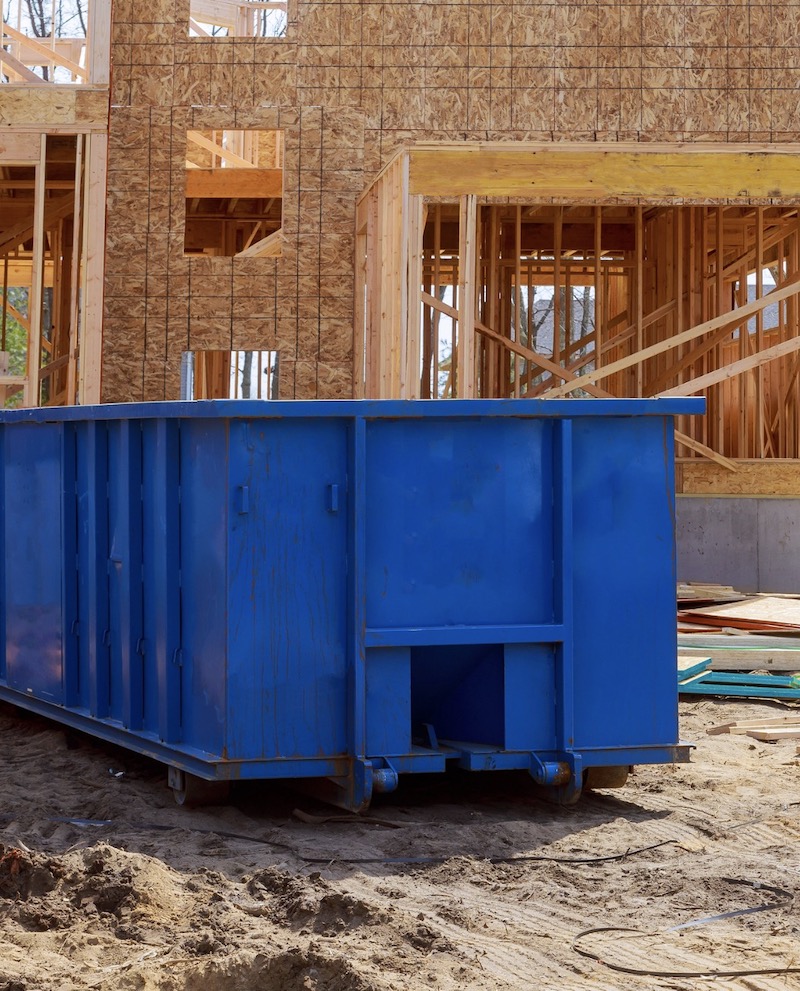Nearly three-quarters of all waste produced in France each year comes from the construction and public works sector. This figure is far from insignificant, and demands a great deal of responsibility and effective management on the part of construction professionals. Types of waste, regulations, best practices: find out all our advice on how to manage construction site waste sorting.
To properly manage the sorting of construction site waste, it is important to distinguish between the different different categories of waste that can accumulate on site.

Inert waste represents more than 70% of construction site waste. These include
Inert waste is disposed of in recycling facilities or in inert waste storage facilities. inert waste storage facilities (ISDI).
As their name suggests, these are wastes which, although not inert, are not considered hazardous: they are non-corrosive and non-explosive. They are also known as common industrial waste ". It includes in particular :
Non-hazardous non-inert waste represents more than 25% of waste on a worksite. Non-recyclable and ineligible for incineration, this type of waste must be stored in non-hazardous waste storage facilities (ISDND). If it has not been sorted, it must be taken to a waste disposal center for disposal.
This category of waste is considered hazardous because it contains toxic substances. Examples include :
Hazardous waste represents only 2% of construction site waste but its management requires great care. It must be packaged and labeled, and not not be mixed with other types of waste. If they cannot be recycled, they must be stored in hazardous waste storage facilities (ISDD).
In the construction and public works sector, every company that produces waste is responsible for it until it is recycled. This means either disposing of it yourself, or entrusting its management to a third party.
For waste disposal, the company responsible for it must turn to structures that comply with regulations that comply with regulations and have prefectoral authorizations to recycle and recover waste.
When it comes to managing construction site waste, building professionals must comply with strict regulations.
Since the 1ster July 2021, it will be mandatory to mention "Waste" on quotations for all work for all works, including renovations. Waste collection facilities are also required to provide each time waste is deposited. waste.
As a building professional, you must mention :
an estimate of the total cost of waste management including container rental, transport, treatment, labor, etc.
Since the 1ster January 2022, the diagnosis for waste from demolition and renovation - or PEMD diagnosis - diagnosis for the management of construction site waste arising from demolition or renovation work on buildings. :
This also applies to buildings where the work is intended to destroy or replace :
To ensure proper management of construction site waste sorting, it's important to adopt a few good practices.
To ensure proper management of construction site waste, we recommend that you equip yourself with at least three collection skipsfor each category of waste: inert, non-inert, non-hazardous and hazardous. There are different types of skips:
You can buy or hire a skip. You can also turn to companies specializing in waste removal and processing.
It is advisable to use rubble bags if if the volume of rubble to be treated is smallor if the site is difficult to access. You'll find these bags in traditional DIY stores.
For large volumes, you can opt for high-capacity rubble bags. However, you will need to hire a truck crane to move the bags.
Collection by dumper truck is a particularly suitable solution if you need to manage a large tonnage of waste or if you need to evacuate waste quickly.
As you can see, good waste sorting management is essential. To help you manage and plan your worksites - monitoring work progress, managing resources, customers, suppliers, etc. -Techtime offers you a web application and a mobile application to make your day-to-day work easier.